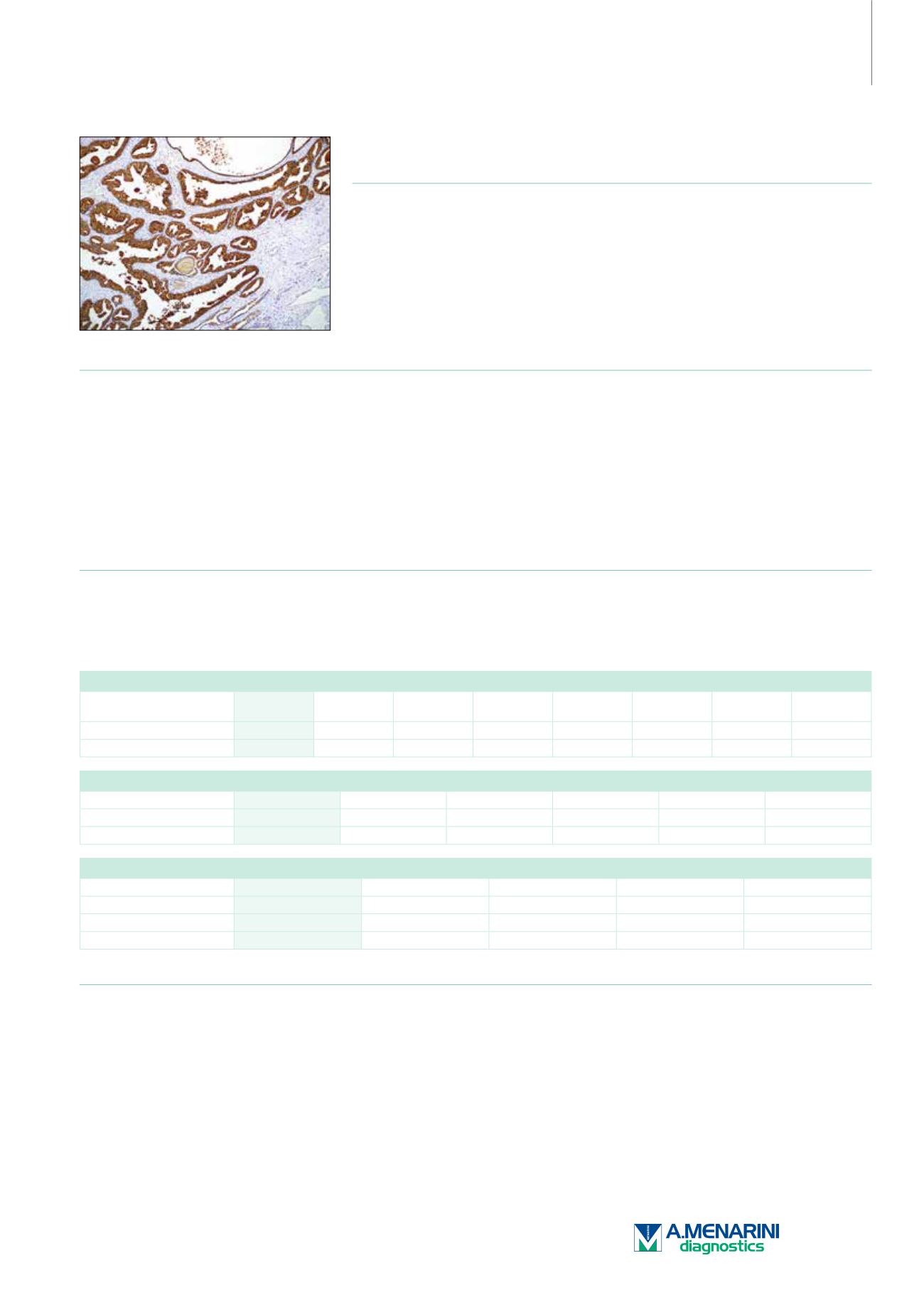
Advanced Solutions
for Advanced Pathology
PSA (ER-PR8)
Mouse Monoclonal Antibody
Cat. No. Description
Volume
45254 IMPATH PSA RTU M (ER-PR8) RUO
50 Tests
44378 PSA RTU M (ER-PR8) RUO
7 ml Ready To Use
44775 PSA 0,1 M (ER-PR8) RUO
100 µl liquid Concentrated
44776 PSA 1 M (ER-PR8) RUO
1 ml liquid Concentrated
Product Specifications
Designation
IVD
Reactivity
Paraffin
Visualization
Cytoplasmic
Control
Prostate, Prostate carcinoma
Stability
Up to 36 mo. at 2-8°C
Isotype
IgG
1
Manual Protocol*
• Pretreatment: Heat Induced Epitope
Retrieval (HIER)
• Primary Antibody Incubation Time:
10-30min @ 25-37°C
• 2-step polymer detection
*Please refer to product insert for complete protocol.
ImPath Protocol*
• Dewax: Dewax Solution 2 (DS2)
• Pretreatment: Retrieval Solution pH 9.0
(TR1) 32min @ 98-103°C
• Primary Antibody Incubation Time:
10-90min @ 25-37°C
• HRP Polymer (Universal) or AP Polymer
(Universal) for 12 min
*Please refer to product insert for complete protocol.
Product Description
PSA is an antigen present in prostate tissue and in the majority of prostate carcinomas. This antibody recognizes primary and metastatic prostatic
neoplasms and rarely tumors of nonprostatic origin. These include breast and a minority of salivary gland tumors. The antigen is a 33-34 kD
glycoprotein that is restricted to epithelial cells of the prostate. An immunohistochemical study showed more than 95% of prostatic carcinomas
stained with anti-PSA. PSA is demonstrable in the cytoplasm of acinar and ductal cells of benign prostate and prostate adenocarcinoma.
Prostate: Malignant vs. Benign
PSA
PSAP
Androgen
Receptor
P504s
CK, 34βE12
p63
CK 5
CK 14
Prostate Carcinoma
+
+
+
+
-
-
-
-
Benign Prostate
+
+
+
-/+
+
+
+
+
Colon vs. Prostate Adenocarcinoma
PSA
CDX-2
CK 20
CEA
CA19-9
P504s
Colon Adenocarcinoma
-
+
+
+
+
+
Prostate Adenocarcinoma
+
-
-
-
-
+
Breast vs. Lung vs. Prostate Carcinoma
PSA
GCDFP-15
Mammaglobin
TTF-1
Napsin A
Breast Carcinoma
-
+
+
-
-
Lung Carcinoma
-
-
-
+
+
Prostate Carcinoma
+
-
-
-
-
Reference
1. Polascik TJ, et al. J Urol. 1999; 162:293.
2. Stenman U-H, et al. Cancer Biol. 1999; 9:83-93.
3. Alanen KA, et al. Path Res Pract. 1996; 192:233-237.
4. Varma M, Jasani B. Histopathology. 2005; 47:1-16.
209


